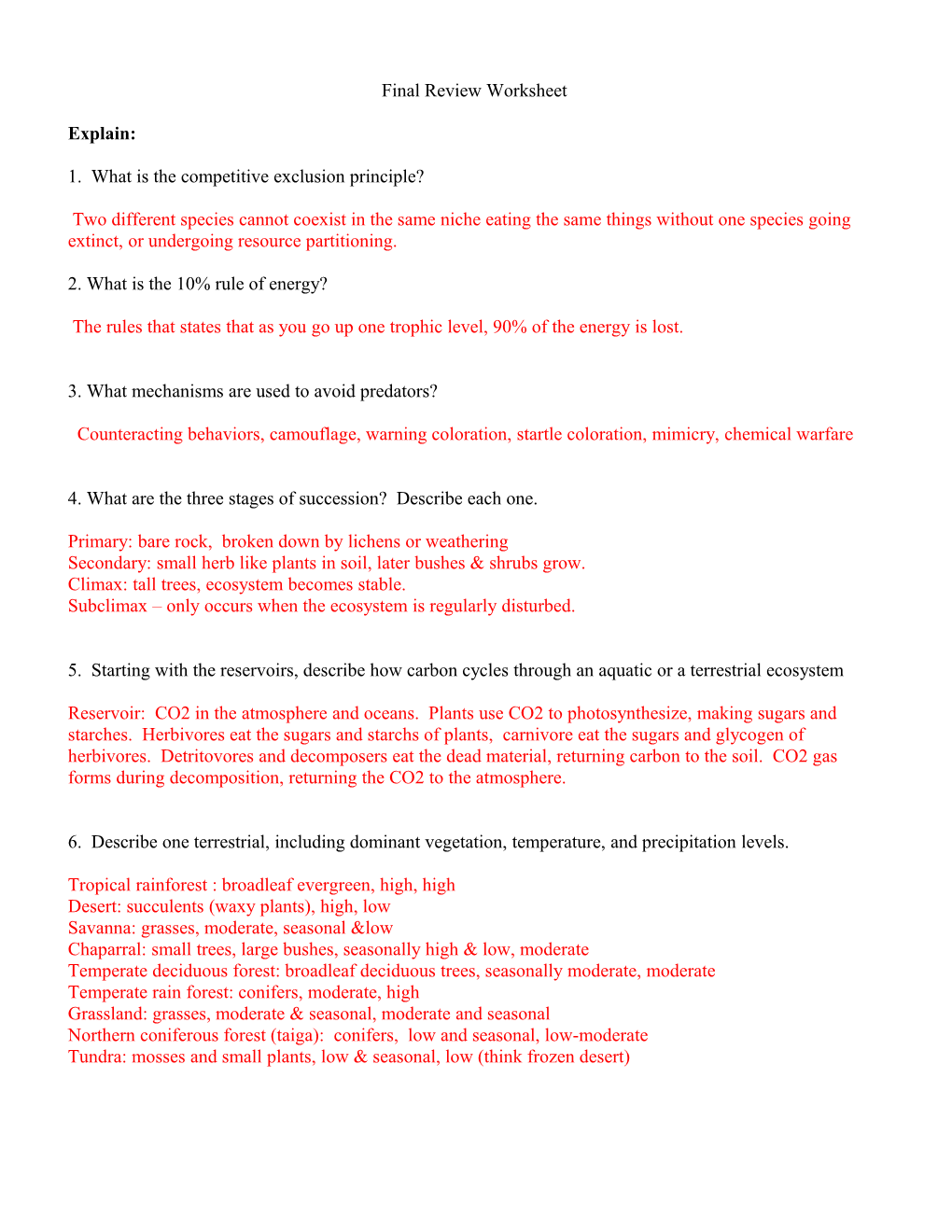Final Review Worksheet
Explain:
1. What is the competitive exclusion principle?
Two different species cannot coexist in the same niche eating the same things without one species going extinct, or undergoing resource partitioning.
2. What is the 10% rule of energy?
The rules that states that as you go up one trophic level, 90% of the energy is lost.
3. What mechanisms are used to avoid predators?
Counteracting behaviors, camouflage, warning coloration, startle coloration, mimicry, chemical warfare
4. What are the three stages of succession? Describe each one.
Primary: bare rock, broken down by lichens or weathering
Secondary: small herb like plants in soil, later bushes & shrubs grow.
Climax: tall trees, ecosystem becomes stable.
Subclimax – only occurs when the ecosystem is regularly disturbed.
5. Starting with the reservoirs, describe how carbon cycles through an aquatic or a terrestrial ecosystem
Reservoir: CO2 in the atmosphere and oceans. Plants use CO2 to photosynthesize, making sugars and starches. Herbivores eat the sugars and starchs of plants, carnivore eat the sugars and glycogen of herbivores. Detritovores and decomposers eat the dead material, returning carbon to the soil. CO2 gas forms during decomposition, returning the CO2 to the atmosphere.
6. Describe one terrestrial, including dominant vegetation, temperature, and precipitation levels.
Tropical rainforest : broadleaf evergreen, high, high
Desert: succulents (waxy plants), high, low
Savanna: grasses, moderate, seasonal &low
Chaparral: small trees, large bushes, seasonally high & low, moderate
Temperate deciduous forest: broadleaf deciduous trees, seasonally moderate, moderate
Temperate rain forest: conifers, moderate, high
Grassland: grasses, moderate & seasonal, moderate and seasonal
Northern coniferous forest (taiga): conifers, low and seasonal, low-moderate
Tundra: mosses and small plants, low & seasonal, low (think frozen desert)
7. fill in the correct terms in the boxes below (five boxes total) describing the phosphate cycle.
8. What happens when a ecosystem is regularly disturbed (like being plowed every 5 years?)
It never reaches climax, it instead has a subclimax.
9. What can species do in order to reduce competition? Describe one example of this mechanism (you can make-up up the organisms).
Resource partitioning.
10. What biome is the most sensitive to human impacts? Why?
Tundra: short growing season.
Desert: very little water means slow growing plants.
